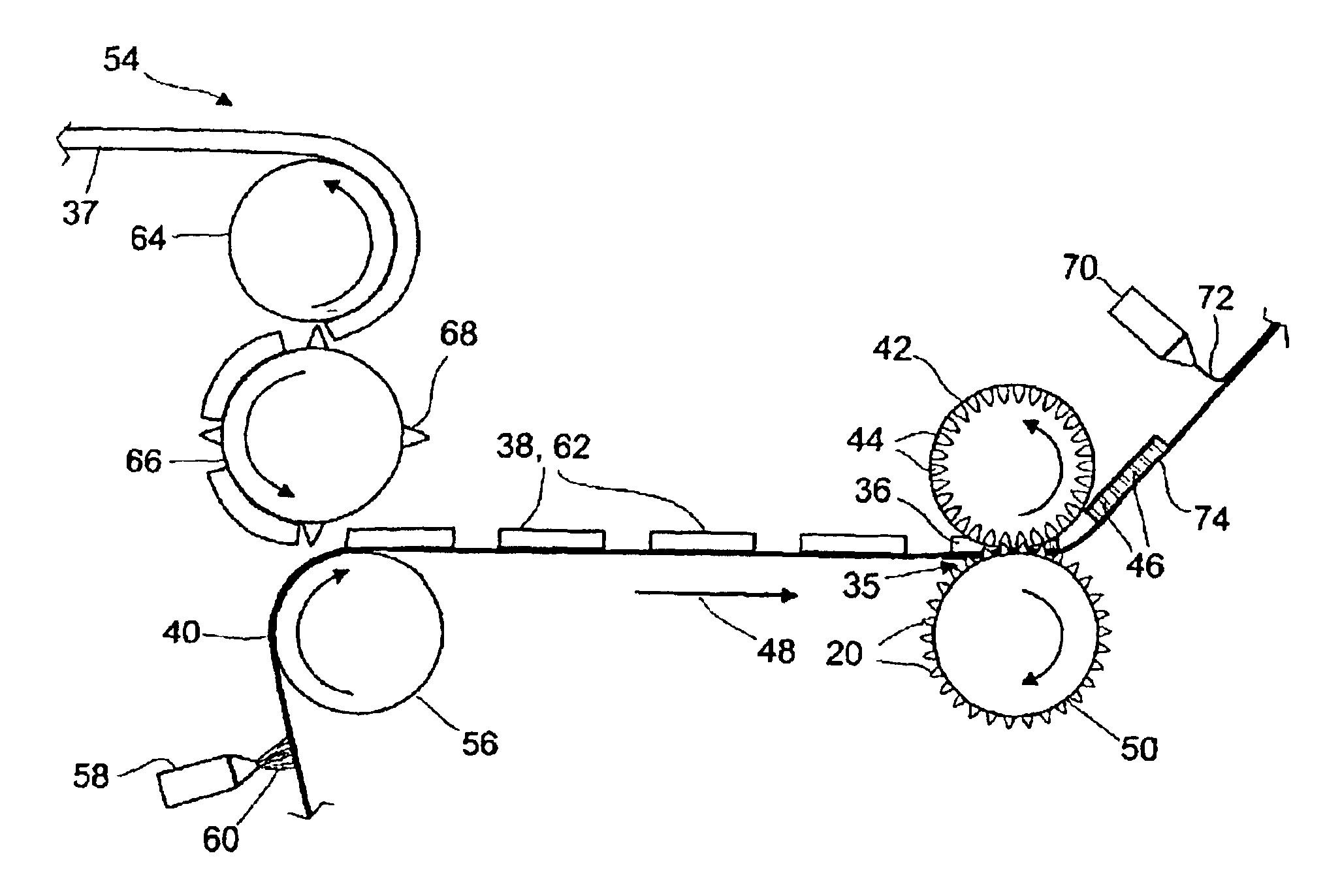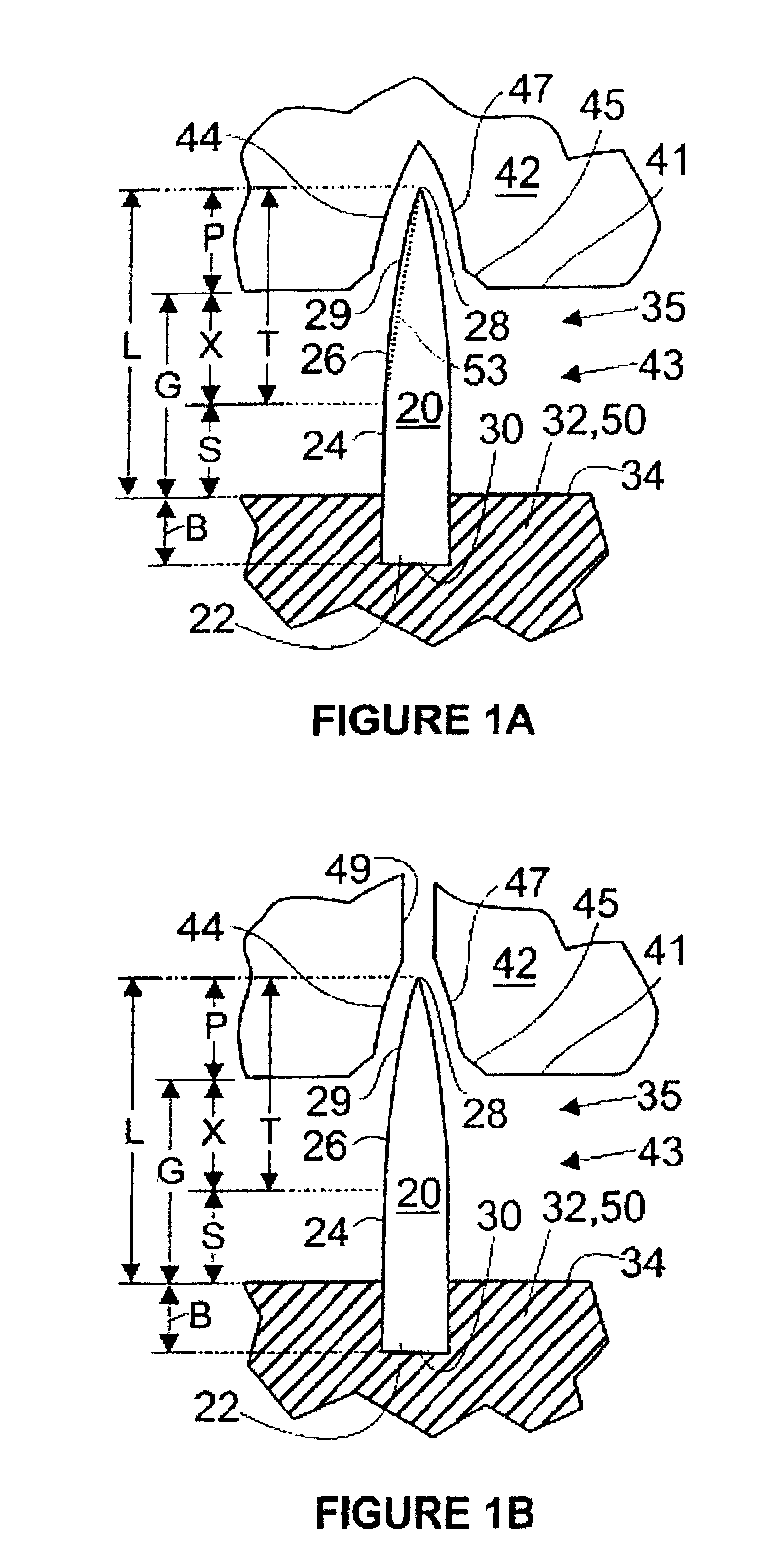System for aperturing and coaperturing webs and web assemblies
a web and web assembly technology, applied in the field of system for aperturing and coaperturing webs and web assemblies, can solve the problems of shear of the web near the tip of the pin, a number of challenges for high-speed manufacturing, etc., and achieve the effect of reducing the amount of material dragging, reducing the in-plane deformation of the web, and reducing the frictional for
- Summary
- Abstract
- Description
- Claims
- Application Information
AI Technical Summary
Benefits of technology
Problems solved by technology
Method used
Image
Examples
Embodiment Construction
FIGS. 1A-1D depict several embodiments in cross-sectional view of a pin 20 retained in a support 32 (e.g., a pin roll 50 or mounting plate) having a support surface 34. The pin 20 has a base 22, a shaft 24 rising above the support surface 34 of the support 32, a tapered section 26, and a tip 28 at the upper end of the tapered section 26. Distal to the tip 28 is the base end 30. The shaft 24 typically has a substantially uniform width, followed by the tapered section 26 whose width generally decreases with distance from the base end 30. In the tapered section 26, wherein the relationship between width and distance from the base end 30 is not linear in several embodiments. The sides of the tapered section 26 can be convex (as shown), concave, or a combination thereof, though in some embodiments a concave taper is particularly useful. The relationship between width and distance from the base end 30 is generally monotonic in preferred embodiments, but a short excursion from a monotonic ...
PUM
| Property | Measurement | Unit |
|---|---|---|
| diameter | aaaaa | aaaaa |
| taper length | aaaaa | aaaaa |
| density | aaaaa | aaaaa |
Abstract
Description
Claims
Application Information
 Login to View More
Login to View More - R&D
- Intellectual Property
- Life Sciences
- Materials
- Tech Scout
- Unparalleled Data Quality
- Higher Quality Content
- 60% Fewer Hallucinations
Browse by: Latest US Patents, China's latest patents, Technical Efficacy Thesaurus, Application Domain, Technology Topic, Popular Technical Reports.
© 2025 PatSnap. All rights reserved.Legal|Privacy policy|Modern Slavery Act Transparency Statement|Sitemap|About US| Contact US: help@patsnap.com



